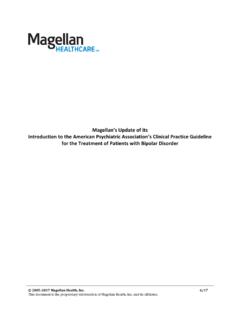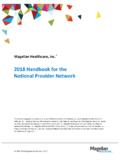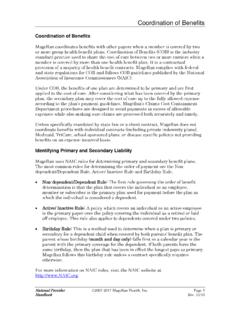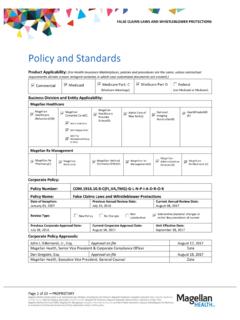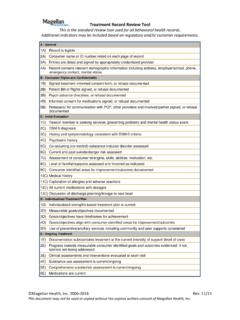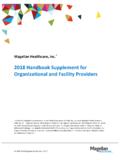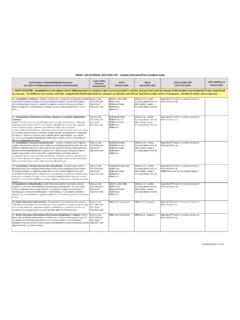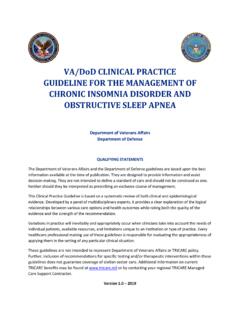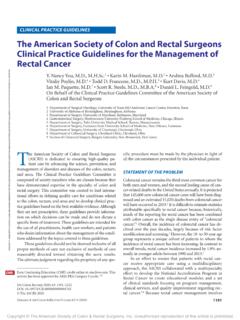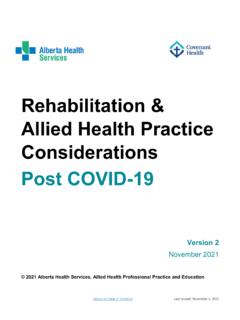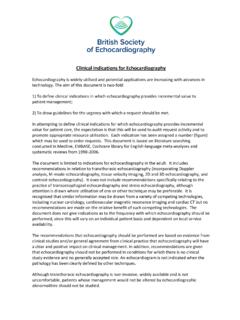Transcription of Generalized Anxiety Disorder Clinical Practice Guideline
1 This document is the proprietary information of Magellan Health, Inc. and its affiliates. Magellan s Clinical Practice Guideline for the assessment and Treatment of Generalized Anxiety Disorder in Adults 2008-2018 Magellan Health, Inc. 7/ 18 2 2008-2018 Magellan Health, Inc. This document is the proprietary information of Magellan Health, Inc. and its affiliates. Magellan Clinical Practice Guideline Task Force Deborah Heggie, Gary M. Henschen, , Louis A. Parrott, , Mary Shorter, LCSW-C. Table of Contents Purpose of This Document .. 3 Provider Feedback .. 3 Executive Summary .. 4 Generalized Anxiety Disorder in Adults assessment .. 12 Diagnosis and Treatment Planning .. 18 Management of Patient Including Patient/Family Education.
2 18 Psychotherapy Treatments .. 19 Pharmacology Treatments .. 28 Combined Treatments .. 47 Monitor Progress and Address Sub-optimal Recovery .. 50 References .. 52 3 2008-2018 Magellan Health, Inc. This document is the proprietary information of Magellan Health, Inc. and its affiliates. Purpose of This Document Magellan Healthcare (Magellan) has developed the Clinical Practice Guideline assessment and Treatment of Generalized Anxiety Disorders (GAD) in Adults for use by providers working with Magellan members who may have these disorders. This Guideline is a research-based document that covers the psychiatric management of adult patients with GAD. It reviews Clinical features, epidemiology, assessment and treatment planning including psychotherapy and pharmacotherapy.
3 For detailed information on the management of children and adolescents with GAD, see the American Academy of Child and Adolescent Psychiatry (AACAP) Practice Parameter for the assessment and Treatment of Children and Adolescents with Anxiety Disorders (2007). The purpose of this document is updated the recommendations from a literature review conducted on GAD through May 2016 by reviewing the research published between 2016 and May, 2018. The rationale for this updated summary, presented in table format, offers clinicians evidence- and consensus-based guidance on assessment and treatment of GAD in one location for ease of use and reference. However, clinicians also should become familiar with the content of the articles referenced in the document.
4 As with all guidelines, this document is intended to augment, not replace, sound Clinical judgment. As a matter of good Practice , providers should note clinically sound exceptions to this Practice Guideline in the member s treatment record, with documentation of the Clinical reasoning for making the exception. Magellan periodically requests treatment records from providers in order to monitor compliance with Clinical Practice guidelines. Additionally, this Guideline does not supersede Food and Drug Administration (FDA) determinations or other actions regarding withdrawal or approval of specific medications or devices, and their uses. It is the responsibility of the treating clinician to remain current on medication/device alerts and warnings that are issued by the FDA and other regulatory and professional bodies, and to incorporate such information in his or her treatment decisions.
5 Provider Feedback Magellan welcomes feedback on our Clinical Practice guidelines. We take all suggestions and recommendations into consideration in our ongoing review of the guidelines. Comments may be submitted to: Medical Policy Department Magellan Healthcare 4 2008-2018 Magellan Health, Inc. This document is the proprietary information of Magellan Health, Inc. and its affiliates. Executive Summary (A discussion of additions/changes in this updated Guideline .) The Diagnostic Manual of Mental Disorders (DSM-5) DSM-5 did not adopt the considered term Generalized worry Disorder although chronic and excessive worry that interferes significantly with psychosocial functioning is a core and defining feature of Generalized Anxiety Disorder (GAD) (Stein and Sareen, 2015).
6 According to the DSM-5, the worries occur for at least six months, often occurring without precipitants. Three or more of the following symptoms are associated with GAD: restlessness/being on edge, being easily fatigued, trouble concentrating, irritability, muscle tension and disturbed sleep (APA, 2013). Comorbidities often include major depression, panic Disorder and obsessive- compulsive Disorder . Epidemiology Epidemiologic surveys show the prevalence of GAD is percent during a patient s lifetime and percent in the previous year, with higher prevalence among women than men. Most cases of GAD begin in early adulthood, and often in the context of chronic physical health conditions (Stein and Sareen, 2015). GADS are the second most common Anxiety disorders for older adults (after phobias), occurring in to of those in a community-based sample (Aggerwal et al, 2017).
7 Half of such cases have onset after the age of 50. Its prevalence in the primary care setting is 7-8 percent of patients, but it is not always detected or recognized because Anxiety symptoms are not often the presenting complaints. Most patients with GAD present with complaints of physical symptoms offering a significant challenge to practitioners (Baldwin et al., 2014). assessment /Diagnostic/Planning The British Association of Psychopharmacology s revised guidelines for the evidence- based pharmacological treatment of Anxiety disorders include recommendations in the detection and diagnosis of GAD including (Baldwin et al., 2014): Recognition of the symptoms/signs of GAD assessment of coexisting depressive symptoms Inquiring about long-standing Anxiety symptoms in patients with unexplained physical symptoms assessment of comorbid physical illness.
8 assessment Scales A recent study focused on the development of the Computerized Adaptive test for Anxiety (CAT-ANX) (Gibbons et al., 2014). Authors reported on the analysis of data from psychiatric participants (n=798) and non-psychiatric community comparison subjects (n=816). The computerized adaptive testing allowed the selection of only a small set of items for each patient from a large bank of test items based on prior item responses. Results of this study showed CAT-ANX scores strongly related to Generalized Anxiety Disorder diagnosis. Authors stated, The resulting increase in measurement efficiency permits Anxiety screening of large populations for epidemiologic studies and determining phenotypes for large-scale molecular genetic studies.
9 The scientific contribution of this study lies in our demonstration that the use of computerized adaptive testing based on multidimensional item response theory generalizes to the measurement of other psychopathologic conditions beyond depression (Gibbons et al., 5 2008-2018 Magellan Health, Inc. This document is the proprietary information of Magellan Health, Inc. and its affiliates. p. 192). They further noted how routine Anxiety screening of patients in primary care is improved by CAT-ANX and is administered in minutes using the internet, without clinician assistance. Investigation of Biomarkers through neuroimaging, genetics and neurochemical measurements According to Maron and Nutt (2018), research on biomarkers may significantly improve the etiology and treatments for GAD.
10 Their recent review of neuroimaging, genetic and neurochemical research concluded that while there is significant overlap with depression the biology underlying depression and GAD are very different and consequently they are two separate disorders. They further acknowledged that this might explain why depression often follows GAD, demonstrating an inability of the body to successfully launch compensatory strategies to manage the constant stress caused by the GAD. The authors concluded that other biological based studies are needed to better target the biomarkers that could contribute to better treatments for individuals with GAD. Management of Patients with Generalized Anxiety Disorder Management of care may include the following: (Baldwin et al.)
